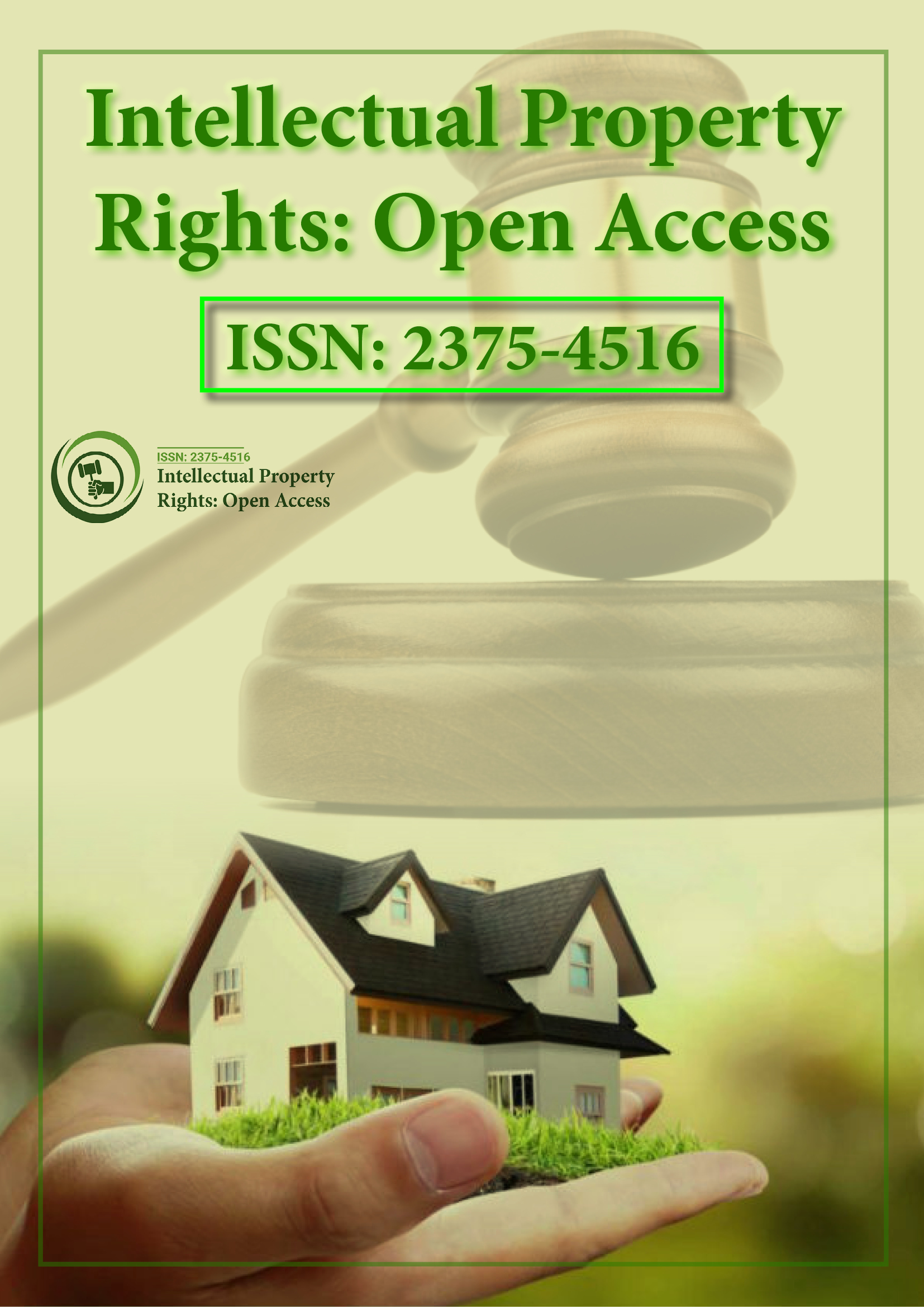Indexed In
- Open J Gate
- RefSeek
- Hamdard University
- EBSCO A-Z
- OCLC- WorldCat
- SWB online catalog
- Publons
Useful Links
Share This Page
Journal Flyer

Open Access Journals
- Agri and Aquaculture
- Biochemistry
- Bioinformatics & Systems Biology
- Business & Management
- Chemistry
- Clinical Sciences
- Engineering
- Food & Nutrition
- General Science
- Genetics & Molecular Biology
- Immunology & Microbiology
- Medical Sciences
- Neuroscience & Psychology
- Nursing & Health Care
- Pharmaceutical Sciences
Perspective - (2022) Volume 10, Issue 2
Deliberating the Natural Expansion of a Trademark
Any Tapey*Received: 25-Feb-2022, Manuscript No. IPR-2022-16104; Editor assigned: 01-Mar-2022, Pre QC No. IPR-2022-16104(PQ); Reviewed: 15-Mar-2022, QC No. IPR-2022-16104; Revised: 22-Mar-2022, Manuscript No. IPR-2022-16104(R); Published: 29-Mar-2022, DOI: 10.35248/2375-4516.22.10. 204
About the Study
A trademark is a form of intellectual property which include a recognizable sign, design, or expression that identifies services or products from a specific source and distinguishes them from others. The trademark owner may be an individual, business organization, or any legal entity. A trademark can be placed on a package, a label, a voucher, or on the product itself. Trademarks used to identify services are sometimes known as service marks. A trademark identifies the brand owner of a selected service or product. Trademarks may be used by others under licensing agreements. The owner of a trademark may also pursue legal action in opposition to trademark infringement. Most nations require formal trademark registration as a precondition for pursuing this kind of action.
A trademark is usually a name, word, phrase, logo, symbol, design, image, or an aggregate of those elements. There is also a number of non-conventional trademarks comprising marks that don’t fall into those standard categories, which include those based on sedation, smell, or sound (like jingles). Trademarks that are considered offensive are frequently rejected according to a nation’s trademark law. The term trademark is also used informally to refer to any distinguishing attribute by which an individual is conveniently identified, which includes the well-known characteristics of celebrities. When a trademark is used for services rather than products, it could sometimes be known as a service mark.
The vital characteristic of a trademark is to completely identify the source or origin of services or products, so a trademark, indicates the source or serves as a badge of origin. In different words, trademarks serve to identify a specific entity as the source of products or services. The use of a trademark in this manner is called trademark use. Certain distinctive rights attach to a registered mark.
Trademarks are used not only by corporations but also by non- commercial corporations and religions to guard their identity and goodwill related to their name. Trademark rights normally arise out of the use of, or to maintain special rights over, that sign about certain services or products, assuming there are no other trademark objections. Different goods and services were categorized by the international classification of goods and services into forty-five trademark classes (1 to 34 cover goods, and 35 to forty-five cover services). The concept behind this system is to specify and restrict the extension of the intellectual property right by determining which goods or services are included by the mark and to unify category systems across the world.
Terms that include “mark”, “brand”, and “logo” are sometimes used interchangeably with “trademark”. “Trademark”, however, also includes any device, brand, label, name, signature, word, letter, numerical, shape of products, packaging, color or combination of colors, smell, sound, movement, or any combination that’s able to distinguish goods and services of one business from those of others. It should be capable of graphical representation and should be applied to goods or services for which it is registered.
The legal guidelines governing trademarks never expire. In this way, the holder has the right to trademark for the life of the product or service. But there are certain exceptions. The consumer is needed to make continuous, lawful use of the trademark so that you can take again trademark laws. So an organization or person ought to frequently manufacture, produce, market, and promote a product with a specific trademark so as for the trademark law to be enforceable. This may be carried out every 5 years by submitting a section eight declaration through the USPTO. Failure to file this could bring about a loss of registration.
Trademarks may be sold and bought. Trademarks can also be certified by different organizations for an agreed-upon time or under certain conditions, which can bring about crossover brands. The private organization licenses many well-known sub-brands to produce versions of popular products. As stated above, trademarks are also used in an effective manner to market brand names. In fact, the power of branding in business is important and might fill volumes, and the usage of brands in marketing is legendary. Some brands are so prominent and feature such successful brand identities that they’ve almost replaced the name that was the original word for the item or service.
Citation: Tapey A (2022) Deliberating the Natural Expansion of a Trademark. Intel Prop Rights. 10:204.
Copyright: © 2022 Tapey A. This is an open-access article distributed under the terms of the Creative Commons Attribution License, which permits unrestricted use, distribution, and reproduction in any medium provided the original author and source are credited.
